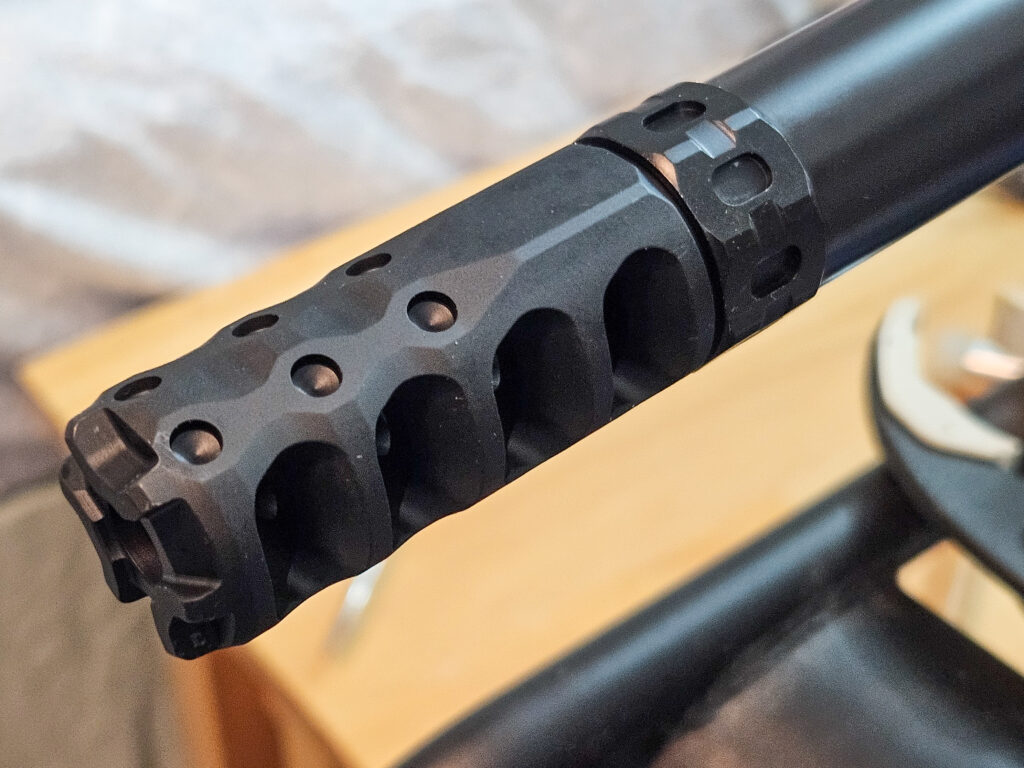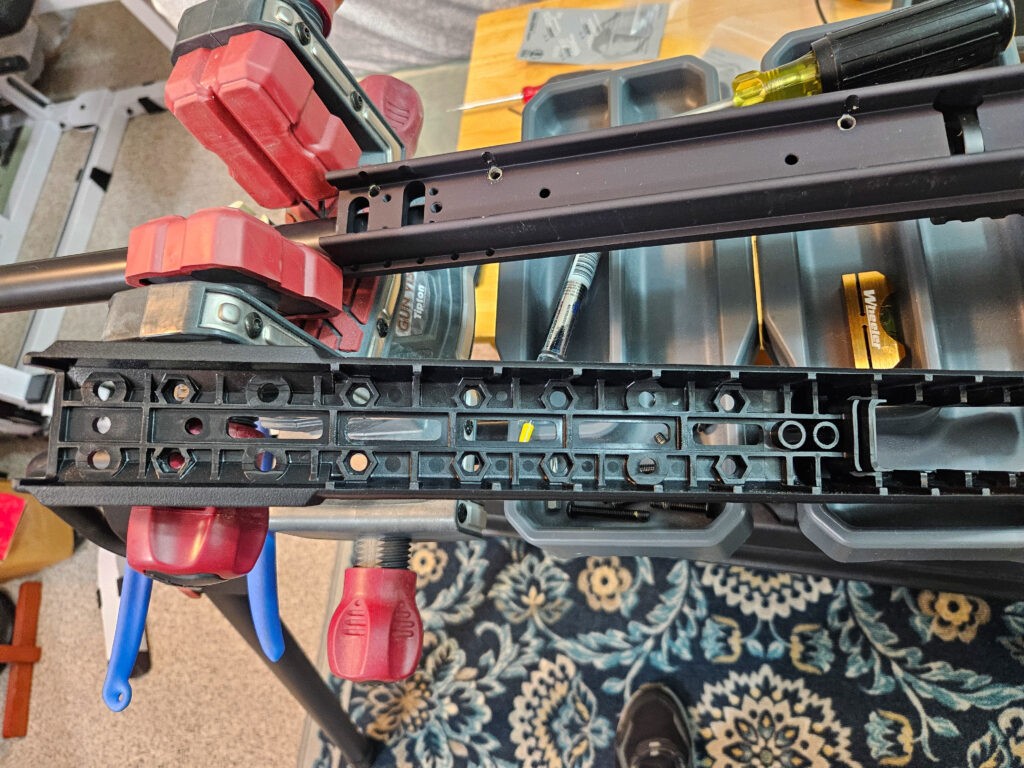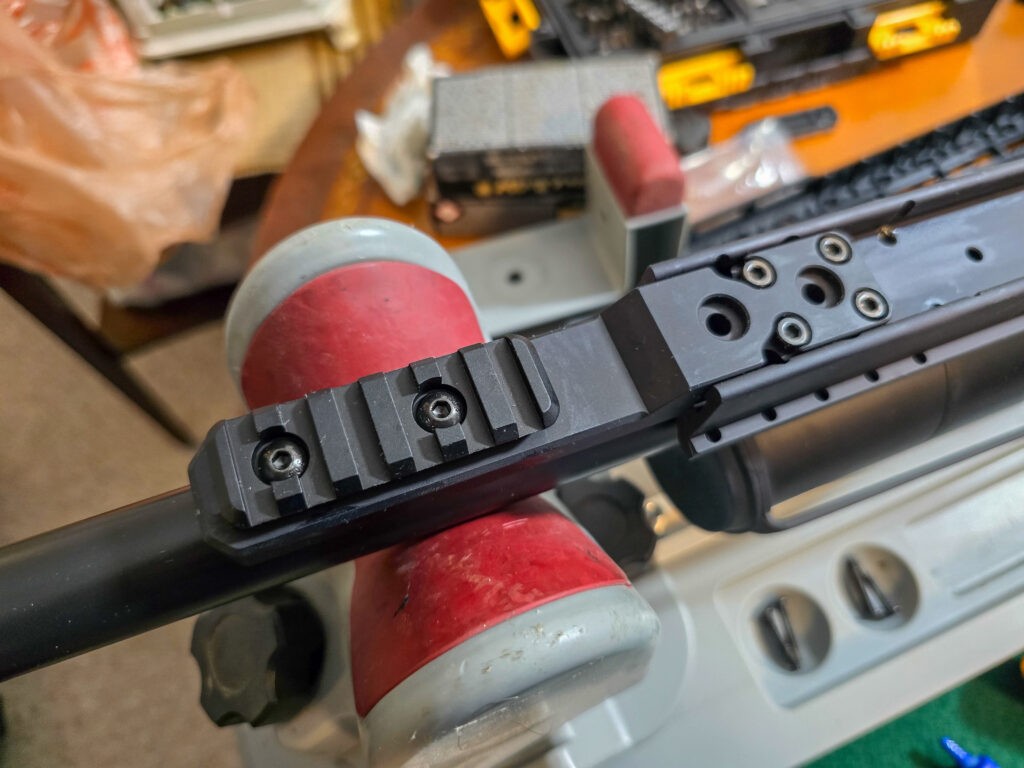Most of my time is spent working on ARs, AKs, and various Pistol Caliber Carbines (PCCs). Once in a while, I get a hankering for a precision rifle and take the plunge … in this case two plunges, an Aero Solus .308 with a 20″ M24 profiled barrel plus a Bergara B14 HMR also in .308. This post will focus on the Solus.
I was customizing a Zastava M77 designated marksman’s rifle (DMR) and then a sales email showed up from Aero Precision with a really good sale on the Aero Solus Bravo. Well, I decided to do some more digging to learn about the features:
- You can get it in .308, 6mm or 6.5 Creedmor – I opted for .308 as I have plenty of match ammo for that caliber. Everything below is about the .308 20″ Bravo just to be clear. The Creedmor chamberings have a few differences such as barrel length.
- Aero Precision makes the receiver and bolt
- The receiver is patterned after a Remington 700 short action and is made from 416 stainless
- The bolt is a 3-locking lug design, has a 60 degree throw and dual ejectors. It also cocks on open.
- A 20 MOA 1913 Picatinny scope rail is integral with the receiver – no need to buy something there
- Ballistic Advantage, a sister company to Aero, makes the barrel
- The barrel is a 20 inch heavy M24 profile with a 1:10 twist, honed and lapped
- The barrel is threaded 5/8-24 and comes with a protective muzzle nut
- The trigger is made by TriggerTech, who I really like
- And the unit on sale that I bought has a stock is the Bravo chassis system from Kinetic Research Group (KRG). It looks like a stock but an aluminum chasis is under the skin.
- The stock has M-Lok slots in it for accessores – but I do have an issue and will mention it below – it is honestly not bipod ready as delivered.
- The stock accomodates AICS-pattern magazines and comes with a 5-round Magpul P-Mag.
- The base weight is around 9.6-10 pounds depending on the specification sheet you read – there is a lot of substance to the rifle – especially given the M24 barrel profile
- Each rifle has a sub-MOA guarantee
The Solus was designed to give the common man an affordable entry-level precision rifle. I’m just fine with that because the only Accuracy International product I could ever afford was a chasis system that I dropped a Remington .300 Win Mag LR XCR barreled action in.

At any rate, I read good reviews plus I’ve owned a few Aero Precision M4 and M5 rifles over the years and decided to give it a try. I certainly couldn’t buy the parts and assemble it myself for the price.
The Solus arrived in the fall of 2023 and only for a quick once over, I had to put it on hold while clearing other projects off the deck. In January 2024, I finally had time to work on it – although the temperature outside was in the teens and my unheated shop wasn’t much warmer. After careful negotiation with my wife – sounds better than I begged her – I set up lights, a table and my Tipton Ultra Standing Gun Vise.
In many respects, the Solus comes ready to go other than an optic plus needing the bore cleaned and then everything properly lubricated. A user manual is included with the rifle but click here if you need to get an online copy.
I did find four things I want to share with you that made a big difference for me:
Added a Precision Armament Hypertap Muzzle Brake
My L1-L5 vertabrae and I are no longer on speaking terms so recoil mitigation means a great deal to me now. On one hand the Solus weighs quite a bit by itself – let’s say 10# ballpark and then about about 2 pounds for the scope and rings — 12 pounds can absorb a fair amount of energy. The KRG Bravo recoil pad was decent but I still wanted more and knew a muzzle brake was the answer.
I did some reading and ordered in a Precision Armament Hypertap. It can cut felt recoil by up to 88% with little to no impacts on accuracy. Click here to visit their site.



Added a Vortex Strike Eagle 5-25x56mm FFP Scope
I called up my friends at Vortex and talked about what I wanted to do with the Solus and they recommended I buy a Vortex Strike Eagle 5-25x56mm FFP scope and 34mm precision rings to go with it. With a 34mm tube and 56mm objective, a ton of light can be gathered No to mention this scope has their latest optics technology in it.






Not surprisingly the scope is incredibly bright and clear. Vortex ups their game on quality with each new generation of scope and they are all backed by their no-hassle warranty.
Added a Spigot To Run a Bipod
To be honest, the one thing that really surprised me is that the KRG Bravo is not truly hard-use bipod ready. Sure, there is a sling stud there or M-Lok slots where you can install a piece of rail section they provide. The problem is that the bottom of the rail system is just polymer and not even very thick. You’d be connecting a bipod to a polymer rail sitting on a polymer handguard that would be absorbing recoil, getting hit wen moving around, etc. It just didn’t sit well with me.


What piqued my curiosity was seeing all of the extra holes in the bottom front of the chassis. Why were they there? Playing a hunch that there might be some kind of reinforcedd bipod connection, I visited the KRG website. Sure enough, there is.
KRG refers to them as “spigots” and they have four different types. They vary in length, what can be attached to them, etc. I bought the “minamalist” model because all I wanted was basically an aluminum bar where I could mount a Picatinny rail section.
I also had to buy a piece of aluminum rail from them. I’m sorry, but I’m just not cool with attaching a bipod to a rifle with some recoil via polymer. I’m a die-hard Atlas bipod user at this point and I buy them with the American Defense Manufacturing (ADM) clamps on them.

I’ll write up another post on the actual installation of the spigot. It’s pretty straight forward and the result is a rock solid bipod mount.
Last comment on the matter – I really did not expect to need to buy more accessories for a solid bipod mount – it came to about $120. Granted plenty of guys don’t use bipods but also, a lot do – including myself. I think Aero should have disclosed that a spigot was recommended for bipod use if nothing else – an option to buy one would have been even better. This is no fault of KRG’s just to be clear. They sold Aero what they asked for.
If I had known this bipod issue, I would have moved to Aero’s full blown chassis system as it wasn’t much more at the time of purchase (about $200-300 more at the time). Buying the chassis by itself now though is prohibitively expensive – at least for me – at $729-ish list. In general though, that is a pretty good price for a chassis of that type.

Added a Plano All Weather 52″ Hard Case
Call me paranoid but whenever I build something where I care about the accuracy, I want it protected in a hard case. I used to spend the money on Pelican and Storm cases (now owned by Pelican) but those things can get expensive.
I’ve been a fan of Plano All Weather cases for years now. I kid you not, I looked up in my Amazon purchase history and I bought my first one in 2014 (they were “AW2” cases back then and Plano has improved them since and now refers to them as the “All Weather Gun Cases”. I have bought quite a variety of sizes since. Why? I honestly don’t think you can buy a better case at their price. I’m not jumping out of planes but I do want my firearms protected from life’s drops, hits and whatnots. I had an overhead pipe start leaking one year and the rifles in Plano All Weather cases stayed dry.
With that said. I bought a 52″ Plano All Weather case to protect the Solus and Vortex scope for only $157.99 + tax off Amazon. Folks, you get one heck of a nice case for that price.
- Seriously heavy polypropylene case construction – I did receive one busted once. Amazon managed to put a fork truck tine completely throught the cardboard box, the case and out the other side. Their drivers still delivered it!! Amazon customer service sent a replacement after I showed them photos but still… Over the years, I have dropped my cases from cars, SUVs and pickups after loads shifted and then a door was opened — they held up just fine. No damage every to contents, loss of zero, etc.
- The cases are water tight / dust tight with a full o-ring seal all the way around the cover
- Really nice solid handes and latches
- The latches are keyed and can be locked
- Wheels on one end for easier transportation
- Pluckable foam for fitting
- Pressure valve to compensate for altitude and temperature changes – you really ought to care about this. Try taking a case from a hot range and opening it in a cold basement once it has cooled off and the air volume has shrunk – it is a bear to open without a valve. That exact example is why I always look for valves on watertight hard cases now.
- TSA approved if you plan to travel with one.
Internal dimensions are 51.5″ long x 14″ wide. Depth of the top is 1.75″ and depth of the bottom is 3.25″.

Summary
The Solus arrived in great shape – fit, finish, etc. were all superb. There were no surprises in terms of adding the muzzle brake and optic. Adding a bipod, which should have been a no-brainer exercise in adding a rail section to an M-Lok slot, turned into more expense but it is really nice mount – I’ll give them that.
I’d recommend the Solus barreled action and Triggertech trigger – no reservations there at all. I need to spend some time shooting the Bravo chassis at this point. The fit of a stock or chassis is a very individual fit item.
I need more time behind the rifle at the range to make a final decision about the Bravo chassis. I may decide to go hunting for a more adjustable chassis with a bit less “chunky” pistol grip.
I hope this helps you out.
Note, I have to buy all of my parts – nothing here was paid for by sponsors, etc. I do make a small amount if you click on an ad and buy something but that is it. You’re getting my real opinion on stuff.
If you find this post useful, please share the link on Facebook, with your friends, etc. Your support is much appreciated and if you have any feedback, please email me at in**@*********ps.com. Please note that for links to other websites, I may be paid via an affiliate program such as Avantlink, Impact, Amazon and eBay.
